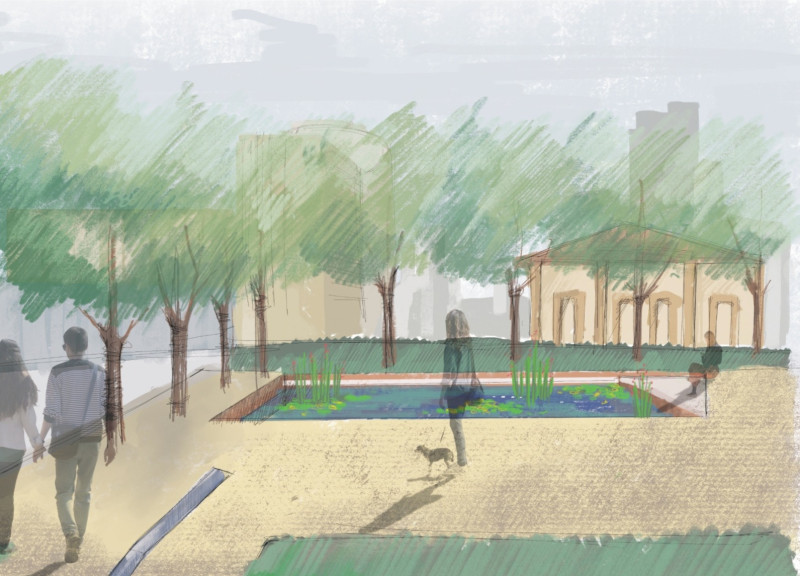5 key facts about this project
The revitalization of Milan's Navigli Channel reconfigures the urban landscape by combining water and green areas to create a lively corridor. This project is located in the historical center of Milan and serves the dual purpose of enhancing public access while promoting social interactions. The design highlights the need for water as an important part of urban life and aims to reconnect the city's residents with natural elements.
Design Concept
The approach focuses on the canal as a key feature, turning it into a vital blue green spine that connects various parks and historical landmarks. The design is divided into distinct segments, each responding to the different street widths and surroundings encountered along the canal. This arrangement allows for versatile spaces that accommodate a range of activities, improving the overall experience for users.
Height Variations
Inspired by Renaissance gardens, the project incorporates notable height variations across the site. These different levels create unique viewpoints that add to the experience of the space, encouraging visitors to explore the surroundings more fully. The design's elevation differences invite a sense of discovery while fostering connections with the water elements incorporated throughout.
Water Features and Public Spaces
The addition of various water features is essential for reinstating the canal's role as a significant urban element. These features not only provide visual interest but also encourage public involvement. Surrounding public spaces are designed with community needs in mind, including a playground for local children, a quiet spot for patients from a nearby hospital, and a hidden garden linked to a community center.
Architectural Language and Historical Context
The design maintains a balance between honoring historical influences and incorporating modern architectural elements. Features reminiscent of traditional Italian gardens, such as grottos, secret gardens, and pergolas, are thoughtfully reinterpreted to serve contemporary uses. This integration of historical context enriches the urban environment, creating spaces that are engaging for both residents and visitors.
Benches placed along the canal invite people to sit and enjoy the views. They provide a chance to reflect on the water's gentle movements while nurturing spontaneous conversations among passersby.






















































